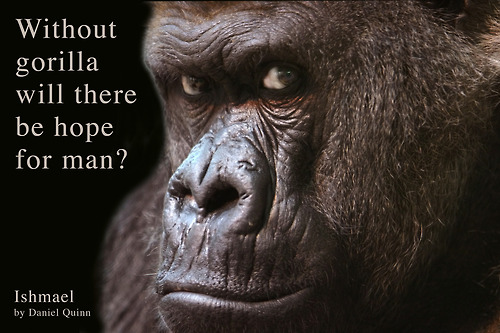Honolulu, Hawaiʻi, 4 September 2016 (IUCN) – The Eastern Gorilla – the largest living primate – has been listed as Critically Endangered due to illegal hunting, according to the latest update of The IUCN Red List of Threatened Species™ released today at the IUCN World Conservation Congress taking place in Hawaiʻi. Four out of six great ape species are now Critically Endangered – only one step away from going extinct – with the remaining two also under considerable threat of extinction.

Four out of six great apes one step away from extinction – IUCN Red List
Today’s IUCN Red List update also reports the decline of the Plains Zebra due to illegal hunting, and the growing extinction threat to Hawaiian plants posed by invasive species. Thirty eight of the 415 endemic Hawaiian plant species assessed for this update are listed as Extinct and four other species have been listed as Extinct in the Wild, meaning they only occur in cultivation.
The IUCN Red List now includes 82,954 species of which 23,928 are threatened with extinction.
Mammals threatened by illegal hunting
The Eastern Gorilla (Gorilla beringei) – which is made up of two subspecies - has moved from Endangered to Critically Endangered due to a devastating population decline of more than 70% in 20 years. Its population is now estimated to be fewer than 5,000. Grauer’s Gorilla (G. b. graueri), one subspecies of Eastern Gorilla – has lost 77% of its population since 1994, declining from 16,900 individuals to just 3,800 in 2015. Killing or capture of great apes is illegal; yet hunting represents the greatest threat to Grauer’s Gorillas. The second subspecies of Eastern Gorilla – the Mountain Gorilla (G. b. beringei) –is faring better and has increased in number to around 880 individuals. Four of the six great apes - Eastern Gorilla, Western Gorilla, Bornean Orangutan and Sumatran Orangutan - are now listed as Critically Endangered, whilst the Chimpanzee and Bonobo are listed as Endangered.
“To see the Eastern gorilla – one of our closest cousins – slide towards extinction is truly distressing,” says Inger Andersen,IUCN Director General. “We live in a time of tremendous change and each IUCN Red List update makes us realize just how quickly the global extinction crisis is escalating. Conservation action does work and we have increasing evidence of it. It is our responsibility to enhance our efforts to turn the tide and protect the future of our planet.”

https://youtu.be/d7LRc-tt4kM
Death Knell' for TTIP as France Calls for End of Talks
"The negotiations are bogged down, positions have not been respected, it's clearly unbalanced,"
Hillary Clinton’s Honduran problem
While secretary of state, Clinton supported new elections after the 2009 coup to prevent the return of left wing president Manuel Zelaya. What followed was a sell-off of mining and hydroelectric concessions that have contributed to the poverty Honduras’ current political instability.
Honduras, Guatemala Deadliest Countries for Environmental Activists
Greenpeace brought the Reef to Canberra
We set up a huge coral garden of 300 coral-like cutouts on the front lawn of Parliament House, to bring home to our new leaders what’s at stake if we don’t act fast enough on climate change.

